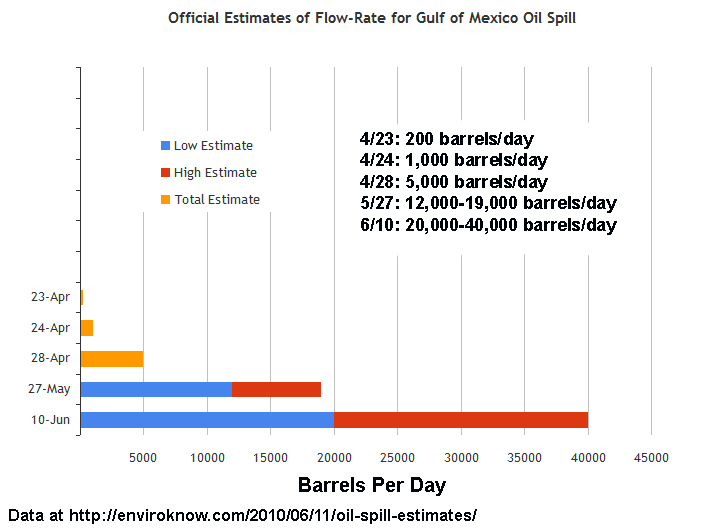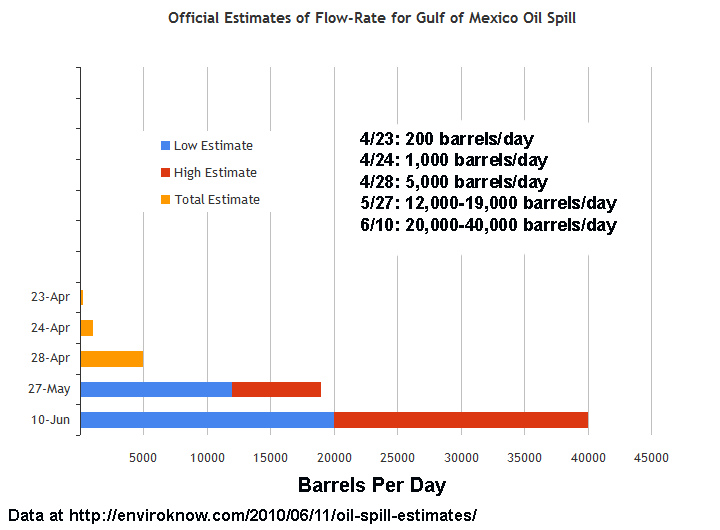This is devastating:
Most of the experts have concluded that, given the limited data available and the small amount of time to process that data, the best estimate for the average flow rate for the leakage prior to the insertion of the RITT is between 25,000 to 30,000 barrels per day, but could be as low as 20,000 barrels per day or as high as 40,000 barrels per day.
The increase in flow-rate estimates over the past several weeks has been a frequent occurrence:
- On April 23, the first official estimate of 200 barrels per day was announced.
- On April 24, a revised estimate of 1,000 barrels per day was announced.
- On April 28, a revised estimate of 5,000 barrels per day was announced.
- On May 27, a revised estimate of 12,000-19,000 barrels per day was announced.
- On June 10, the most recent estimate of 20,000-40,000 barrels per day was announced.
The chart below depicts the federal government’s flow-rate estimates over the past seven weeks:
Some facts about the new estimates:
- This is the 4th major adjustment to the estimate, representing a 100-fold to 200-fold increase over the original estimate of 200 barrels per day.
- Assuming 20,000 barrels per day, the total leak in 52 days would be 1,040,000 barrels, or 43,680,000 gallons.
- Assuming 40,000 barrels per day, the total leak in 52 days would be 2,080,000 barrels, or 87,360,000 gallons.
- NYT: This is “equivalent to an Exxon-Valdez disaster every 8-10 days.”
- The total spill as of early June is now estimated to be 4-8 times larger than the entire Exxon-Valdez spill.
- If the gusher has indeed already leaked 43-87 million total gallons, this would place it between the 4th and 9th largest oil spill in world history.
- If oil continues to leak at the same rate until a relief well is drilled in August, this will likely be the second largest oil spill in world history.




